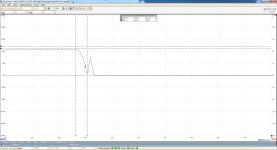zombiess said:
Mihai_F, do you have a schematic for your design?
Read this before deciding to switch devices as fast as possible. Choosing device switching time is about balance.
https://toshiba-semicon-storage.com/info/docget.jsp?did=59464
Well i had 2 attempts at making a complete schematic and to this day i did not finished it, i have bits an pieces here and there, i personally find it easier to work from the layout, that way i know precisely what goes where, so then i did not put any more effort in to finishing the schematic. I can sow you the layouts.
Yes, about application notes, i read that and may others a while ago, and every now and the i read therm again, and every time i understand more deeply the principles, they are very useful, but only experience make it sink in, it is like learning to fly, you read the theory about it, it makes perfect sense, but if you do not practice you can't learn it....
Now about fast switching, i had a funny (to me atleast) experience wile ago, it might be off topic, but it might be helpful to someone someday. After i completed my ESC v1.2 for the plane, i decided to make a battery charger for my plane battery (Li-Po 22s 60Ah), the design was a simple buck converter (not going to talk about BMS ), a high side switch (FET and the gate driver ic) a freewheeling shotky diode a big coil and a cap, then i decided to switch that fet on and off at 50ns for low loses and small heat sink. All worked great, i was running the buck converter at 1Kw (92v at 11A) thru resistive load (please note resistive) 2 clothes irons and 2 hair dryers

, there was a bit of overshoot and ringing at the switching node, but nothing horrible. Then i decided to connect the battery and start testing how would it charge, i was very confident that it would work perfect, but it was not. The circuit when connected to the battery and powered, once current started to go over 1A my picoscope device would lose connection with the PC, the PC monitor would display some strange horizontal lines and shortly after that the micro controllers that controlled the buck and the LCD would reset. I started investigating, i found that at switching node i had an 100v overshoot ,Vds rise over 200v in 40ns followed by some crazy ringing, FET Vds was 250v. For about a month i bashed my had and i could not explain why with resistors workend and with battery not, then one day in the bathroom (great aha moments and ideas had came in the bathroom...

) it dawned on me, the battery is not just resistive is also inductive, and then i was thinking at those 200v in 40ns. Man i made a wide band radio jammer

, the EMI that it created was enough to disturb USB connection with PC and a display connection with PC. The solution was simple and elegant slow down the switching, so from 40ns i went down to 300ns and every thing was nice and ringing free, and i could charge my battery at 1kw without disrupting every electronic device in the neighborhood. Most probably a noob mistake, but it was a gerat learing experience for me.


